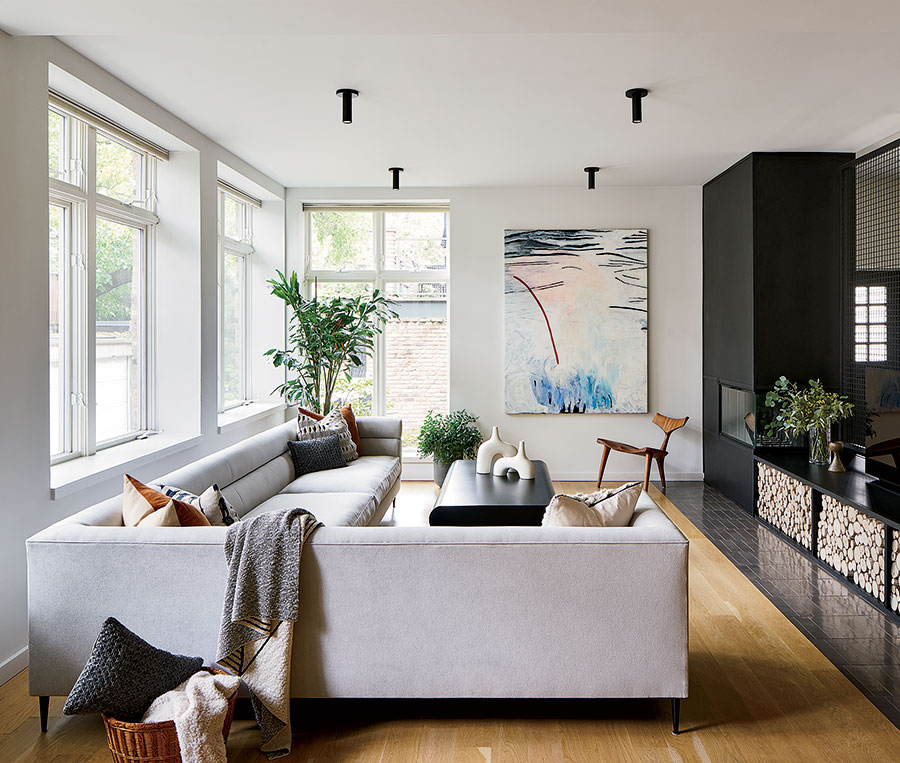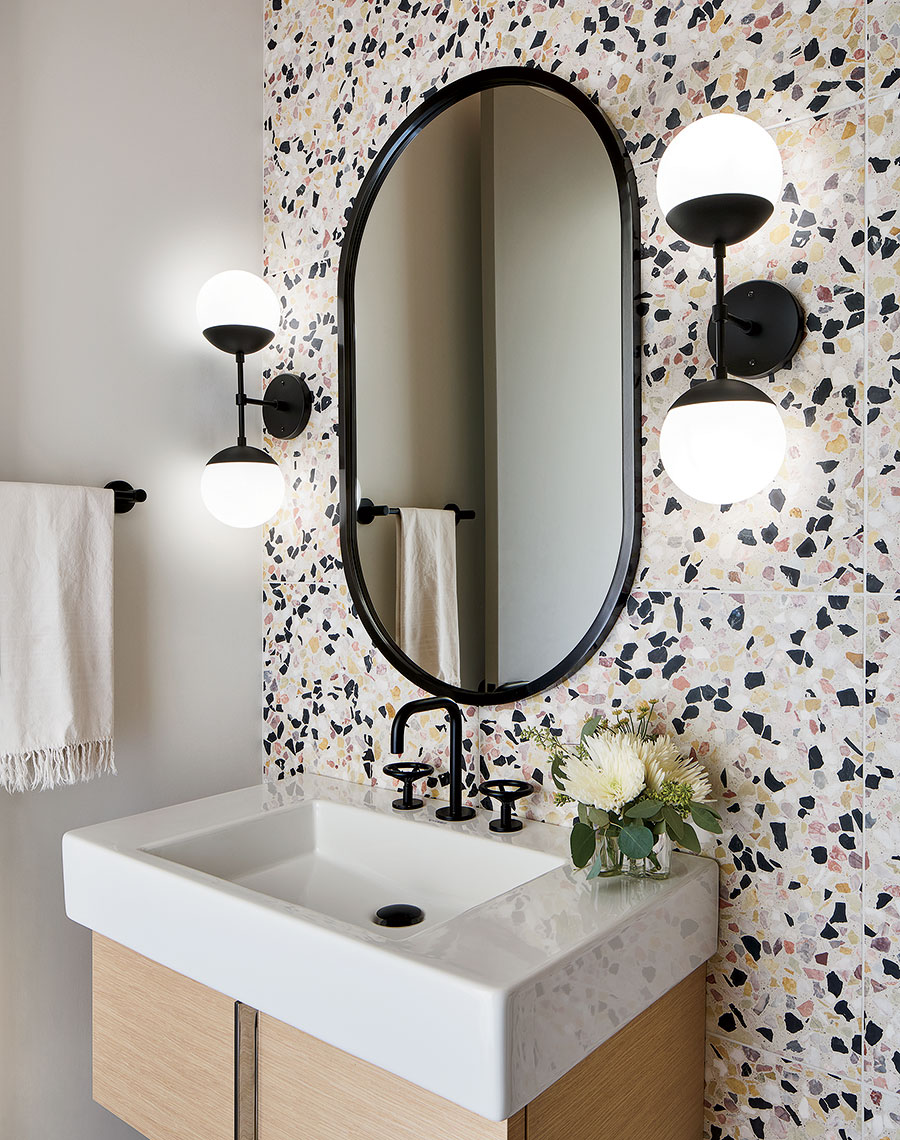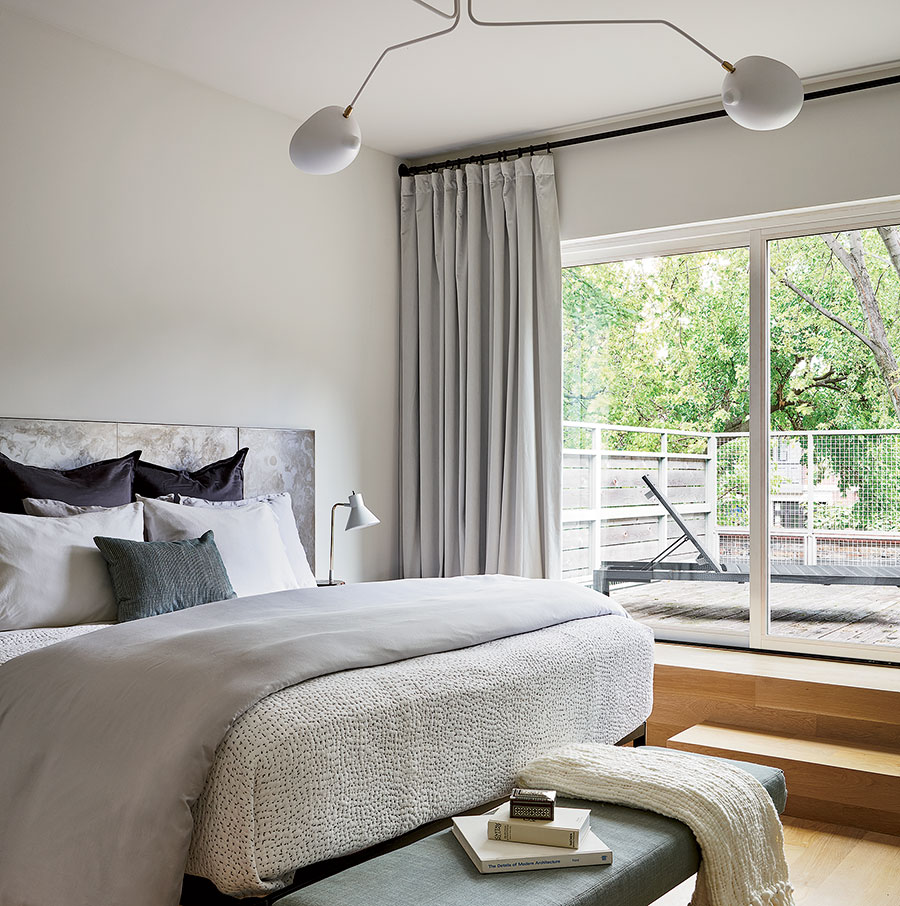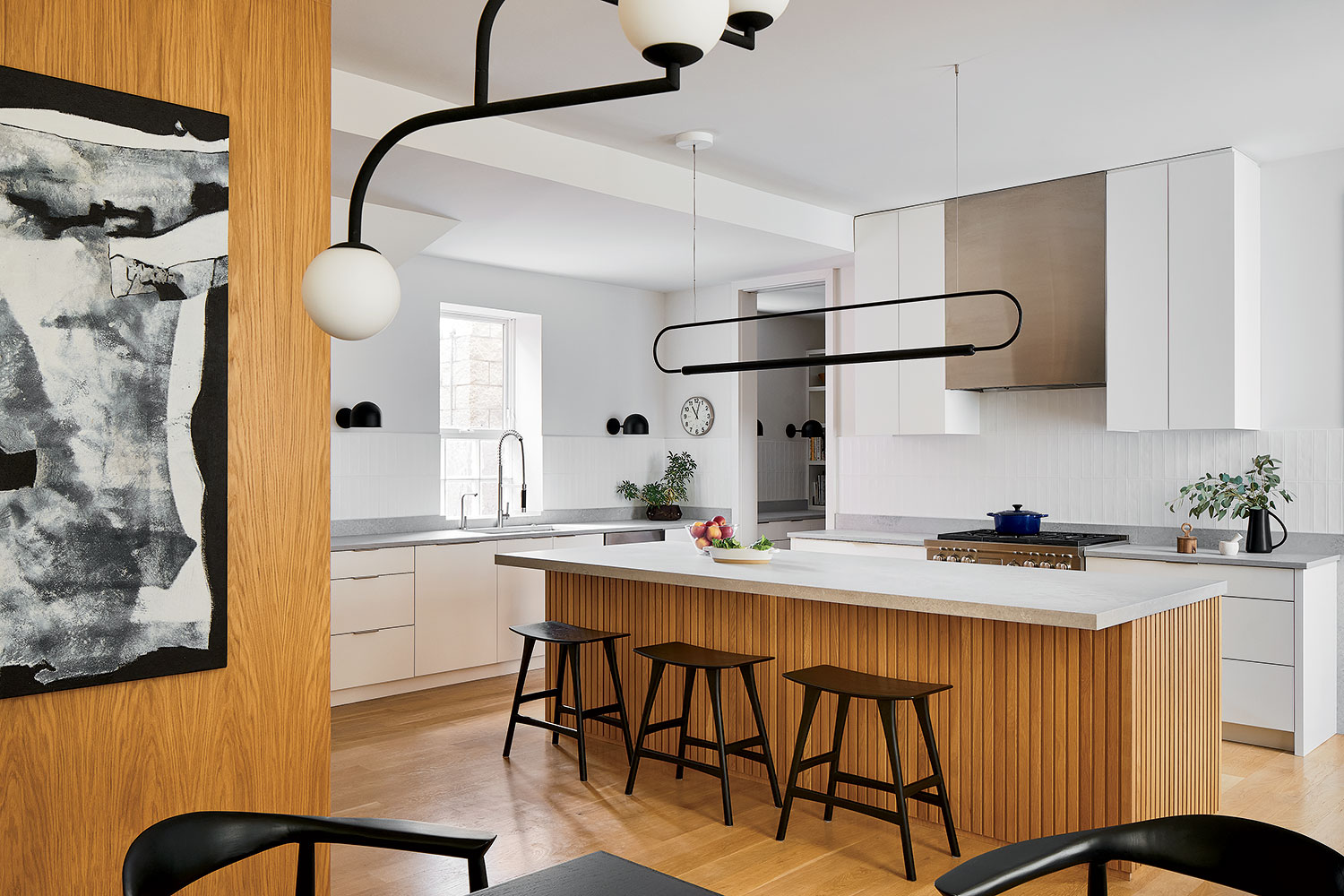Bucktown may be known for its modern single-family homes and (mostly) mom-and-pop shops, but there’s still a hint of that 19th-century industrial flavor peppered throughout what was once the village of Holstein. And for certain creative architects and their open-minded clients, those brick boxes can make fantastic roots on which to graft an exceedingly modern home.
Such is the case with a former nut-and-bolt factory on Paulina Street, a 4,500-square-foot residence that rises two stories behind an unassuming street-facing garage. “When we first met with Christy and Bud, they were living in what I call ‘constipated symmetry’ in Lincoln Park,” says Mike Shively, founding partner of the Logan Square–based architectural firm En Masse. His clients — Christy Mueller and Bud Stephani, owners of Lincoln Park’s popular Pasta Palazzo — wanted to break out of the oppressive feel of their old home and build an open-plan space where they could host gatherings frequently and with ease. “We entertain often, and at every party everyone ends up in the kitchen, so we wanted one that could comfortably handle that inevitable situation,” says Mueller.

When sketching out that space, Shively started with a massive island unencumbered by clutter; there’s not even a sink in sight. “The kitchen is where we spend our time, and it’s perfectly laid out,” says Mueller. “There is so much creative storage that it’s easy to keep clean and neat, even when preparing a big meal.” Two pocket doors bookend the stove and custom cabinetry: One hides a walk-in pantry, whose work shelf extends from the Caesarstone countertop adjacent to the island; the other leads to a small home office and a “snug,” a quiet space for watching television or reading a book away from the cacophony. “The knuckle beside the pantry that was left over was just big enough for a powder room, which I convinced Bud and Christy to line with pink terrazzo,” says Shively’s business partner, Lucas Goldbach. Champagne flecks shimmer in the glow of Cedar & Moss sconces.

When the owners aren’t banging around the kitchen or pulling chafing dishes from a cabinet secreted beneath the staircase, they’re likely dining with friends at the 12-seat table or cozying up to the wood-burning fireplace in the living room. There, a steel screen rises from behind a stone bench softened by a cord of decorative birch logs. It serves two purposes: to subtly guide and deposit visitors into the main space, and to prune what would have been an awkwardly wide front room.
En Masse also created an ingenious solution for storage: a mudroom “box” that rests in the center of the otherwise open entry floor. “Teenagers come with a lot of stuff,” says Mueller. (The couple has two teen girls.) “At our previous home, all those items were dropped at the door, so we more or less lived among the mess.” Now everything has its labeled space in the wood-clad storage room that breaks up the 2,000-square-foot ground floor. With pocket doors on both sides, this room maintains the open, flowing feeling of the home.

The upstairs is private and efficient. “There’s a minimal hallway, and everything is power packed,” Shively says. Working hardest is the primary bedroom, where sliding glass doors lead to a furnished deck, sliding barn doors open to a double-sink bathroom, and a pocket door conceals a walk-in closet. That confine cleverly flows into a hidden laundry room, which also functions as a discreet exit. “So, one person can sneak out without waking the other,” Shively explains.
Not an inch of space has been wasted in this asymmetrical abode, where every nook and corner helps keep a highly social family organized. And thanks to organic materials and warm tones, all that openness downstairs feels expansive yet cozy. “The design hit all the notes for us, and it immediately just felt right,” says Mueller of the house, which was finished in 2020. “There isn’t a day that goes by that we don’t just appreciate how comfortable it is. It honestly feels like home.”



